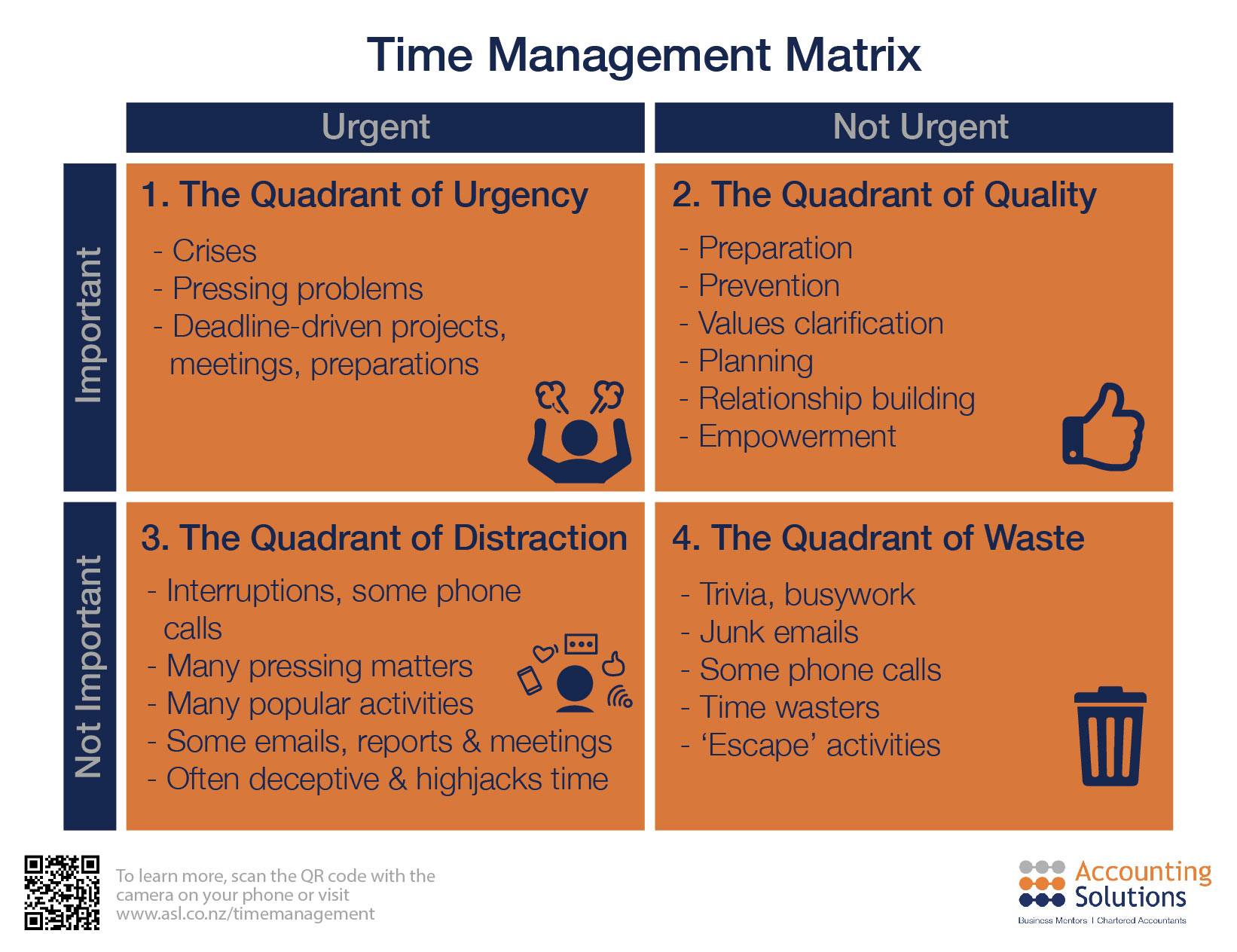
Likely, your answer would be the top left box. Firstly, take a look at the quadrant and decide which box you think is most important.
STEPHEN COVEY FOUR QUADRANTS FULL
Ok, now that you understand how the quadrant works exactly, here’s how you can use it to its full potential. Using the Time Management Quadrant to maximise productivity You’re probably asking yourself, "why would I even include them?" Don't worry the answer to that is coming shortly. They are tasks that bring little to no value to your day and do not require you to look at them any time soon. They include such things as:įinally, the bottom right quadrant involves tasks that are not urgent and not important. Such tasks seem to crop up all the time, but, if you actually think about it, they don't really add much value to your day and can generally be ignored. The bottom left box includes tasks which can be deemed as urgent, but which are not very important. Instead, they do not require your immediate attention but will need seeing to eventually. This means they will help you to succeed in the long run, but do not necessarily need doing right now.

The items that you right in the top right box are those that are important, but not urgent. These are the sorts of tasks that need dealing with right away and that delaying them will cause disruption to your schedule and to your business’s success. This means that they are time-sensitive and very important to your day. Let’s take a deeper look at each quadrant one-by-one.Īs you can see, all of the tasks that are placed inside of this box are both urgent and important.
STEPHEN COVEY FOUR QUADRANTS HOW TO
You will also need to know how to then use this quadrant to maximise your productivity and to prioritise tasks. However, what is important is actually understanding what each quadrant means.

That’s it! Already, you’re probably starting to get an idea of what each box is about.Īs you can see, the quadrant is actually very straightforward. Then, on the left of your page, write “important” next to the top box and “not important” next to the bottom box. Next, on the top of your page, you’ll want to write “urgent” above the left box and “not urgent” above the right box”. To start with, take a page in your diary or notebook and divide it up into four even squares. Or, if you’re a hard-working employee looking to get more out of their day and to excel, you should give this a try. So, if you’re a business owner looking to boost employee productivity, then you may want to consider deploying this tool across your company. This quadrant is the ideal way in which people should break down their schedule and assess which tasks need doing and when. One of the core elements of the book, and perhaps the most tangible tool the book gives, is the Time Management Quadrant. The foundations it was written on ring true for all people working in all industries and can be used to quickly boost productivity. This is despite the fact that it was published back in 1989. His book has sold more than 25 million copies worldwide and is widely considered one of the best time management guides available. In case you weren't aware, Stephen Covey is the best-selling author of the widely acclaimed book, 7 Habits of Highly Effective People.

Use your sheet of paper to record what you did during each half hour as the day progresses.


 0 kommentar(er)
0 kommentar(er)
